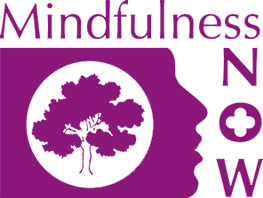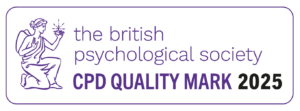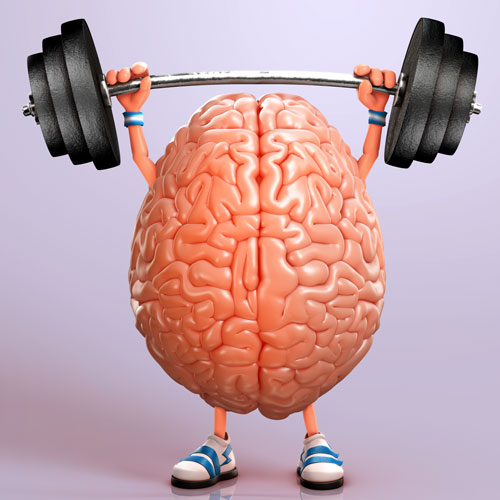Recent neuroscience, over the past 20 years has scientifically proven that it really is entirely possible to take steps to totally change the structure and function of your brain – in effect ‘re-wiring’ it so that we become happier, mentally healthier and are able to express love, kindness and compassion for yourself and others more readily. Furthermore, by taking deliberate steps to develop your brain in positive ways, the research actually suggests that you’ll be more successful in life and work generally too.
The concept is called “self-directed neuroplasticity” by the researcher Dr. Jeffrey M. Schwartz in his book, “The Mind & The Brain” (Neuroplasticity and the Power of Mental Force). Schwartz puts forth a compelling argument that you aren’t at the mercy of genetically-predetermined brain activity. Rather, you are in the driving seat because you play a decisive role in influencing your own brain’s structure and function by deciding where and how to focus your attention. You can do this by actively choosing what to think about. In his book, Dr Schwartz uses brain scans to prove the efficacy of self-directed neuroplasticity and these show how OCD patients, stroke victims, musicians, and more have used this approach to change their brains for the better. Dr Rick Hanson and Dr Daniel Siegel have also made tremendous contributions in this field.
What is neuroplasticity?
It used to be the case that medical science considered that our brains were more or less ‘set’ by the time we reached adulthood. Neuroplasticity (Neuro = nerve, Plasticity = changeable or malleable) is a term that describes how your brain is capable of constantly changing its internal shape, connections and functions in response to your environment, thinking, emotions, behaviour, as well as injury.
What is self-directed neuroplasticity?
Since we know that the brain remains plastic and ‘re-wires’ itself for our entire lives, self-directed neuroplasticity is a tool that we can use to consciously control how we want our brains to work. So, for example, if you want to increase your ability to feel and express happiness you might start a gratitude journal. You are ‘forcing’ your brain to behave in a certain way – for example in the case of keeping a gratitude journal your brain quickly adapts to experience and express a sense of gratitude more often and more readily. Similarly, anytime you learn a new skill (e.g. how to play a musical instrument), your brain structure and function changes and will adapt to whatever you challenge it with.

Using Self-Directed Neuroplasticity
Everything that your brain is exposed to will have an influence upon it; your behaviours, environment, social group, sleep cycle, supplements, drugs, etc. By becoming aware of what influences your brain will help you to consciously change those influences that may be causing more detriment than harm. Here are some steps that you can take to harness the life changing power of self-directed neuroplasticity:
The baby-steps of awareness: You may be aware of a variety of things that you’re unhappy about and/or things in your life that you dislike. Choose one thing at a time and become aware of the particular habit, mood, etc. that you’d like to change. Don’t try to run before you can walk – only try to change one thing at a time.
Attention: When creating self directed changes, focus all of your attention on implementing a healthy thought pattern and behaviour. Of course, this will require effort, but remember that whatever you focus your attention on will become your reality. If you choose to focus on feeling down, angry or depressed, these feelings will amplify. If you choose to concentrate on gratitude, this attention magnifies your happiness.
Volition – you’ve got to want to do it: At the beginning of attempting to change your brain, it’s going to be uncomfortable. We are all set in our own ways and self-directed neuroplasticity is not an entirely comfortable process and you do need to make a little effort – but it is undoubtedly effective. Attempting anything new is often scary – imagine throwing yourself into water without knowing how to swim – your brain either adapts and figures something out or you drown. While the “sink or swim” example is pretty extreme, you may well face some degree of internal resistance near the beginning of your change. Although our brains are so adaptable, they do tend to want to keep repeating the patterns they’ve already learned. With plain old willpower and consistently focusing on gratitude instead of depression (for example), your brain will adapt, and you’ll soon find that your general mood ‘set point’ will be much higher on the happiness scale.
Just do it: Be consistent and engage your new neural pathways for at least 15 minutes each time any unwanted thoughts occur. This helps because it shifts your focus away from the bad, and onto the good, and this is what leads to permanent brain changes over time. Ultimately, feelings of depression will be overpowered (and more difficult to produce) due to the fact that it will be easier, mentally and physically to express and experience happiness.
The beauty of the changing brain: Over time, and with consistent focused effort, your brain changes become more solidified. However, there is one caveat: use it or lose it! Remember that your brain is constantly in a state of change and that you must keep ‘feeding’ it with the positive changes that you desire – the more you practice a healthy behaviour, the easier it is to maintain. It is well known that Buddhist monks who practice mindfulness or forms of meditation involving compassion tend to rarely experience depression – this is because their brains become “wired” to preferentially express positive emotions after years of practice.
As already mentioned, the practice of mindfulness is proven to have a profoundly positive effect in ‘growing’ our brains. One of the ‘golden’ rules of psychology is that we tend to get more of what ever we focus on. It’s a generalisation of course. So, if we find ourselves frequently focussing on what we don’t want then sadly, that’s the direction our brain may grow in. On the other hand of we instead focus on the direction of travel we aspire to, that’s in tune with our values, then almost miraculously, that’s the way our brain structure will be forged. All of the popular mindfulness meditations will be valuable, including the ‘Mountain’ a wonderful guided visualisation including a great metaphor for resilience, and especially ‘Loving Kindness’, otherwise known as ‘Metta’ meditation which teaches us to focus on compassion for others as well as for ourselves.
With many thanks to “Grow your own brain!” Self-Directed Neuroplasticity, article by Jayney Goddard MSc, FCMA, FRSM, FRSPH
Nick Cooke, for Mindfulness Now, is offering a full day online CPD training on the above title, interactive on Zoom on Saturday 5th February 2022. The cost of attending is £130 for Mindfulness Now /CEC students and graduates and £160 to all others. Training manual and CPD certificate for 7 points included. To book please call 0121 444 1110 or email info@cecch.com.










